Sculpture Unveiled of Beloved Walrus Euthanized In Norway
UPDATE – 05/04/2023:
Approximately nine months after Freya the walrus was euthanized in Norway, a life-size sculpture of the 1,300-pound creature has been unveiled in Oslo. The effort was made possible through an online campaign, which raised $25,000 to create the bronze statue.
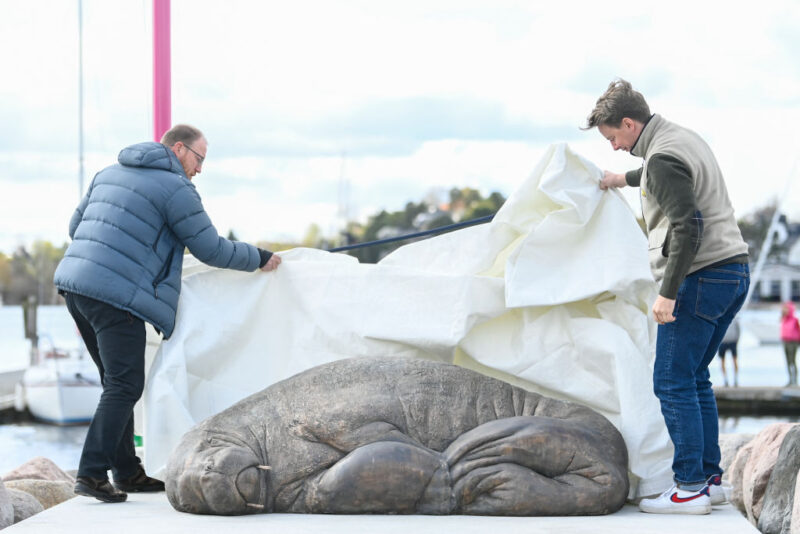
“I started this because I’m furious about the way the [Norwegian] Fisheries Directorate and the state handled this situation,” campaign organizer Erik Holm said at the unveiling on April 29. “Beyond the issue of Freya, we need to ask ourselves how we treat animals and nature. We need to think about our relationship to wildlife.”
Astri Tonoian, the statue’s creator, added, “This is how humans treat wild nature, but it is also how humans treat humans. This is how we treated Freya. And so, I will call the statue For Our Sins.”
Freya was euthanized in August 2022 over what Norwegian officials claimed were concerns for the public, as crowds constantly gathered at the marina where the walrus was known to sunbathe. Her death sparked outrage not just in Norway, but across the world, due to the species’ protected status.
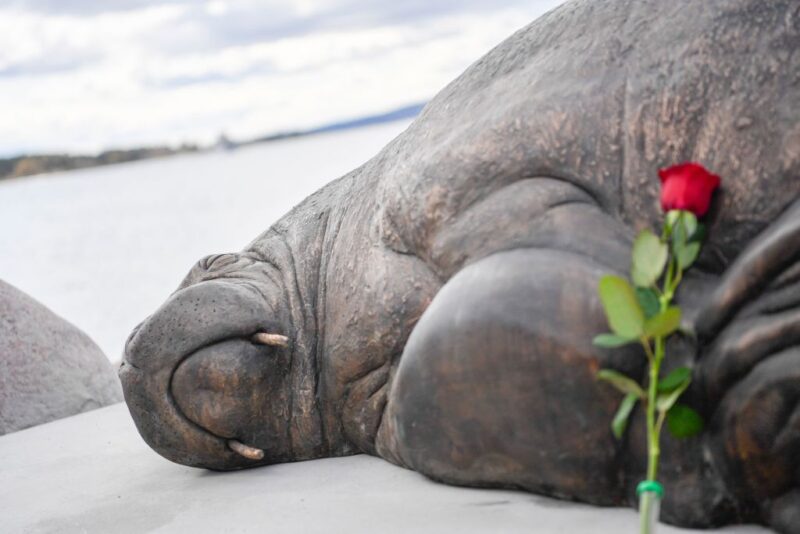
Those looking to view the sculpture can do so at Kongen Marina, in Oslo, near where Freya was spotted throughout the summer of 2022.
UPDATE – 08/16/2022:
The Norwegian government has announced that Freya, the 1,300-pound walrus seen lounging around Frognerkilen over the past few weeks, has been euthanized. The decision was made over concerns the public keeping clear of the marine mammal, causing potential safety issues.
The murder of Freya is barbaric. A beautiful animal who was doing no harm & would have moved on eventually. Shame on officials for killing her & the selfish idiots who continued to ignore the warnings. Animals are not a attraction for your entertainment.#FreyaTheWalrus pic.twitter.com/KhfNOGVbbw
— Aislinglouaaa (@Aislinglouyt) August 14, 2022
Writing in a press release, Frank Bakke-Jensen, the director general of the Norwegian Directorate of Fisheries, said, “The decision to euthanize the walrus was made based on an overall assessment of the continued threat to human safety. Highly skilled and trained personnel executed the order in conduct with current routines and regulations for euthanasia for marine mammals.”
The decision to euthanize Freya comes after the Directorate of Fisheries said that such action was “out of the question” and “the last option,” as walruses are a protected species in Norway.
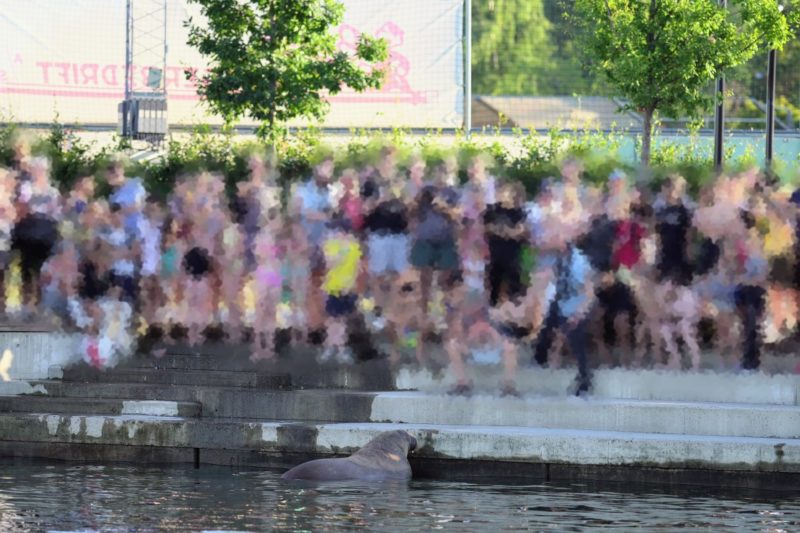
However, officials began to warn the public that euthanasia was under consideration, as people weren’t leaving the walrus alone. Some were swimming up to the mammal, while others were throwing various objects at her. The Directorate of Fisheries claimed there was no other plan that would have ensured Freya’s safety, which was also cited as a reason for her being euthanized.
“The Directorate of Fisheries’ assessment is that the public’s negligent behavior and failure to follow the recommendations from the authorities can endanger life and health,” said Nadia Jdaini, senior communications adviser of the Directorate of Fisheries. “Animal welfare is clearly weakened. The walrus does not get enough rest and the professionals we are in dialogue with consider her to be stressed.”
Word of Freya’s euthanasia has resulted in public outcry, with social media users calling the move unnecessary. Walrus expert Rune Aae, who tracked Freya’s journey, responded to the news by saying, “This is Norway in a nutshell. Too often we kill the animals we don’t like or can’t cope with. It’s an outrage in Norway how we are treating animals.”
Aae also criticized authorities for not creating a safe space for Freya, which could have been accomplished by blocking off areas where she could spend time.
Now they've killed Freya, the gentle walrus who meant no harm to anyone.
It's indefensible. Wild animals increasingly have no safe place in this world.
Every single person who ignored the warnings should be deeply ashamed. She had her whole life to live. pic.twitter.com/gbVUR8JfMQ
— Dr Tom Montgomery (@DrTOMontgomery) August 14, 2022
Bakke-Jensen responded to the public outcry, saying, “We have sympathies for the fact that the decision can cause reactions with the public, but I am firm that this was the right call. We have great regard for animal welfare, but human life and safety must take precedence.”
Freya’s body has been handed over to the proper authorities for further handling and examination by a veterinarian.
ORIGINAL ARTICLE:
Norwegian boaters and fishermen are having to contend with a threat they likely never anticipated: a 1,300-pound lounging walrus named Freya. The large marine mammal has reportedly been sunbathing on boats just off the country’s coast, damaging the vessels and, at points, causing them to sink.
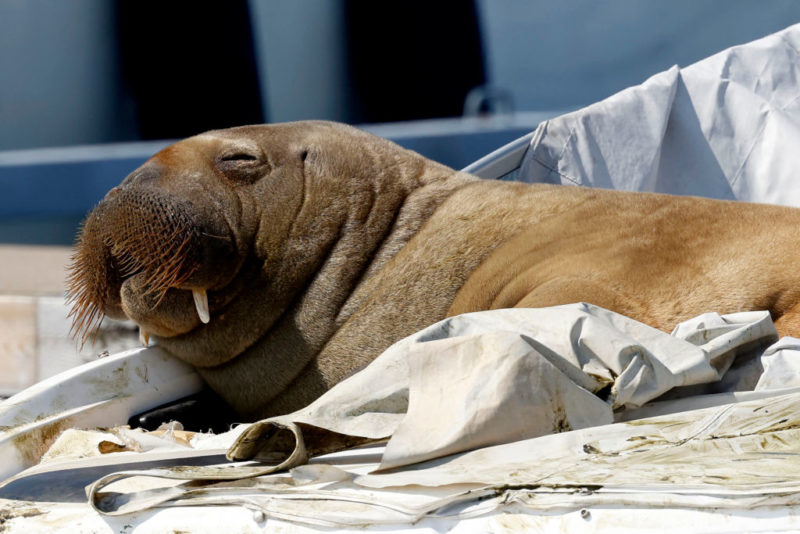
Freya, named for the Norse goddess, has been in the public eye since late 2021, having traveled south from the Arctic Circle. She made stops in the United Kingdom, the Netherlands, Germany and Denmark, before arriving in Norway during the summer of 2022. Wildlife experts have been able to keep tabs on the walrus due to the distinctive “little pink spot” on her nose.
In June 2022, Freya was spotted near the town of Kragerø, approximately 100 miles from Oslo. She’s since made her way to the Norwegian capital, frequenting Frognerkilen. This has been to the excitement of onlookers and the dismay of boaters, who have suffered damage to their vessels after Freya tried to climb aboard and sunbathe on them.
According to researchers, a floating platform has been constructed and placed in the water, in the hopes of attracting Freya away from the boats. However, it’s not worked. The hope is the walrus slowly grow accustomed to the dock, which will then be used to transport her back to the Arctic Circle.
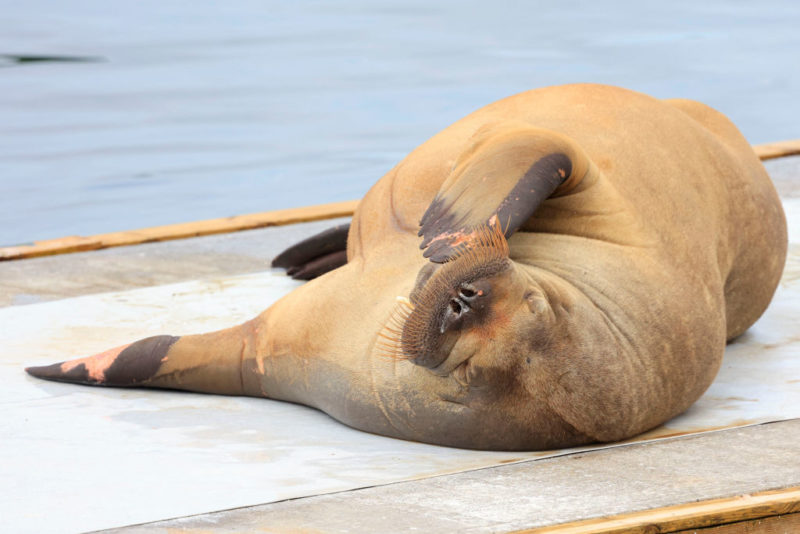
While the majority of the public has fallen in love with the sunbathing walrus, experts are concerned for her safety, as people have started to surround her on land and in the water. Speaking with Norwegian news agency NTB, researcher Rune Aae shared that Freya is likely stressed out by all the attention.
“She doesn’t get any peace,” Aae said. “Everything indicated that she wanted to get away. But she couldn’t because she was trapped. She needs to relax for up to 20 hours. When she is constantly stressed out by people and their presence, it is not good for her.”
Ideas to keep onlookers away have been proposed, such as cordoning off parts of the dock in Frognerkilen, but nothing has been settled upon.
Big story in Norway this summer is a walrus we've named Freya has made it to our shores and is touring the country, laying around and sinking boats pic.twitter.com/rQolsxd88b
— Wild Geerters (@steinkobbe) July 19, 2022
As aforementioned, Freya has been traveling along the northern part of Europe since 2021. In December of that year, she was spotted lounging on a salmon cage off the coast of the uninhabited island of Vementry, in Scotland.
Among the most unusual places the walrus has been caught sunbathing was atop a submarine docked off the coast of a naval base in the northern Netherlands. Funnily enough, the underwater vessel was of the Walrus-class, the only type currently operated by the Royal Netherlands Navy.
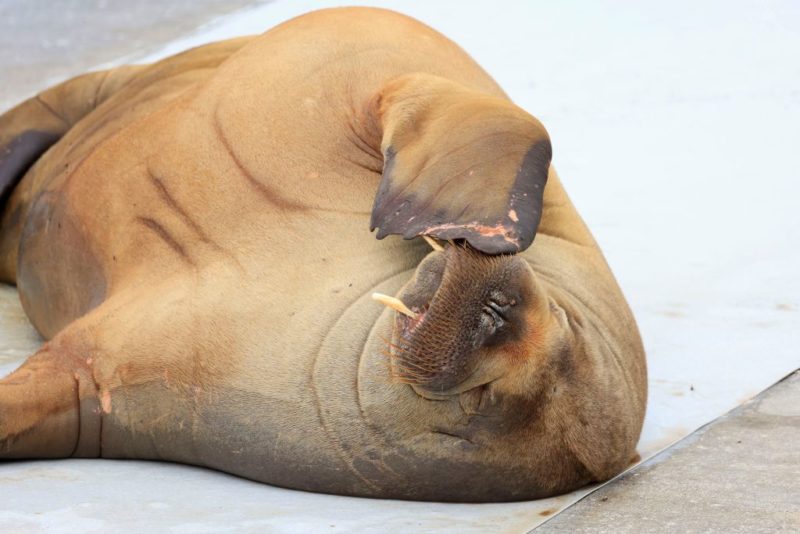
The consensus is that Freya’s move from the Arctic Circle is largely due to climate change. The ice caps typically inhabited by walruses have begun to melt at a rapid pace, forcing the species to travel to new locations. This puts them at added risk of exhaustion and starvation.
More from us: 73-Year-Old Woman Attacked By Sailfish During Fishing Trip Off Florida Coast
Another concern is shipping traffic and the acidification of the world’s oceans. As Travis Parker, a researcher at the National History Museum in London, wrote in November 2021:
“If we keep losing sea ice we will probably see a reduction in [the walrus] population, but it probably won’t drive them to extinction. Shipping traffic and acidification pose a greater threat. Vessel strikes are a hazard, while shipping pollution and ocean acidification put their prey, such as bivalves and clams, at risk.”





